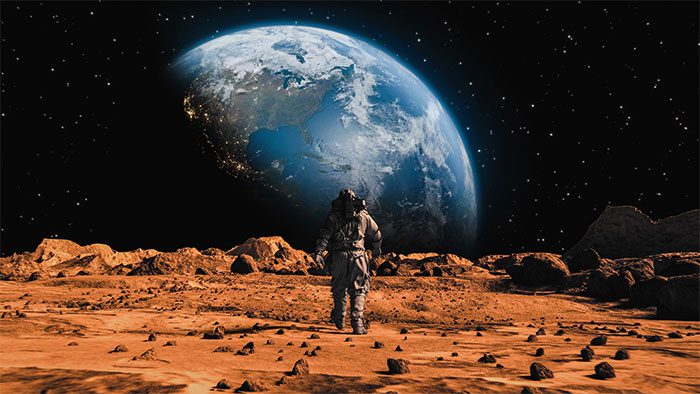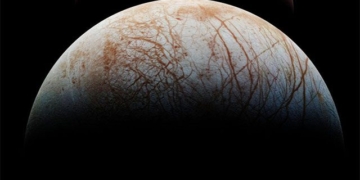The Earth has been pushed closer to the Sun multiple times, only to drift back, coinciding with the emergence of giant ocean currents and a “hidden entity.”
According to Live Science, based on geological evidence dating back over 65 million years from hundreds of locations worldwide, scientists have discovered that every 2.4 million years, the Earth undergoes a “major astronomical cycle.”

Earth as seen from Mars – (Graphic: SPACE.COM).
The major astronomical cycle is marked by stronger currents known as “giant ocean currents” that appear in the oceans, powerful enough to reach the bottom of the trenches.
These intense currents erode large sediment deposits accumulated during the quiet periods of the cycle.
Writing in the scientific journal Nature Communications, the authors specifically identify the culprit: Mars.
“The gravitational field of the planets in the Solar System interacts with each other, and this interaction – known as resonance – alters the eccentricity of the planets,” said Professor Dietmar Muller from the University of Sydney (Australia), a co-author of the study.
The eccentricity determines the orbit of a celestial body. If a planet orbits its star in a perfect circle, the eccentricity is 0.
The greater the eccentricity within the range of 0-1, the more elongated the orbit becomes. With an eccentricity of 1, the elliptical shape breaks into a parabola, and that celestial body will escape the system.
Thus, the gravitational resonance between Mars and Earth has caused the orbits of the two planets to change slightly every 2.4 million years, in addition to creating violent ocean currents.
One of the other impacts noted by the authors is that Earth is pushed closer to the Sun by Mars when the gravitational interaction peaks.
This explains the periodic climate changes on Earth. When Earth is nearer to the Sun, the environment becomes warmer, and then gradually cools as the planet drifts back to its previous position, only to be pushed again.
However, the research team emphasizes that this periodic warming phenomenon is not related to human-induced climate change due to greenhouse gas emissions. That is not a reason for us to justify it.
This gravitational interaction cycle also contributes to maintaining deep ocean currents whenever global warming impacts them.
Overall, the new research indicates that planets within a star system can profoundly influence one another, from their orbits to climates and other natural activities that help sustain life on those planets.




















































